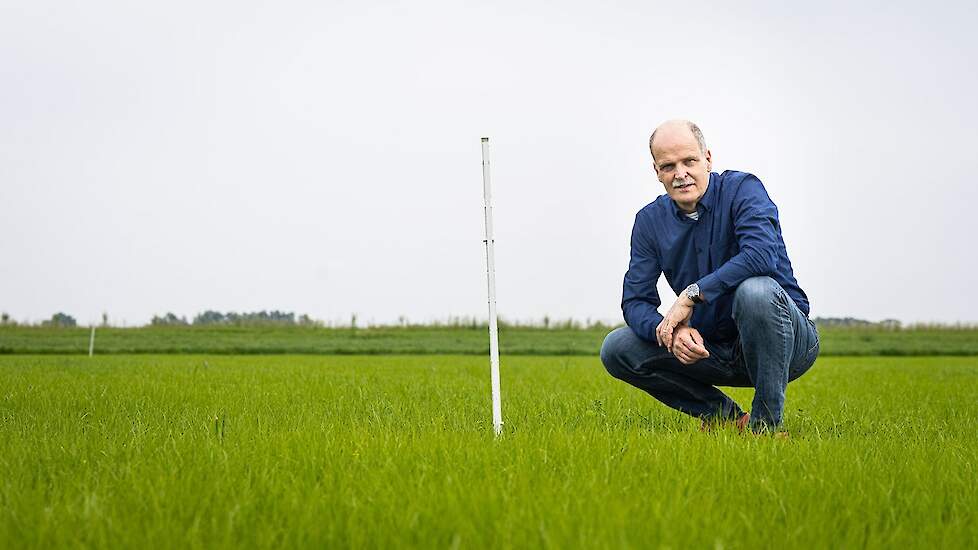Grass quality determines the future of dairy farms
The challenges facing dairy farms require that the grass component in the ration is consistently of top quality. Limagrain is therefore investing heavily in new varieties with high digestibility. It is up to dairy farmers to make each grass silage a top product.
Forage is the basis of the ration on dairy farms. On most farms, grass is the main forage, alongside maize or other feed crops.
“The proportion of grass in the ration is significant, but its quality is the most difficult to manage,” says Wilfried van Straalen, senior researcher and advisor at Schothorst Feed Research in Lelystad. “Given the challenges facing the dairy industry, every cut of grass must be of top quality. Farmers can no longer afford a failed grass silage. Milk production drops immediately.”
MAJOR CHALLENGES
The challenges on dairy farms are both financial and environmental. On the one hand, operating costs are rising, while on the other, substantial investments are needed to reduce the environmental impact of the farm on its surroundings. The critical milk price (the milk price needed to keep the farm running in the long term) is rising above 50 cents, according to figures from accounting firms. With highly fluctuating milk prices, this cost level is a huge challenge for many farms.
GRASS QUALITY IS DECISIVE
On dairy farms where grass is the main component of the ration, the difference between profit and loss is determined by the quality of that grass. This was evident from the results of 2023, a year in which the feed value of late spring silages was disappointing due to low crude protein levels and rising NDF values. Due to lower digestibility, daily feed intake per cow decreased. “In practice, we saw that milk yield dropped by 1 to 2 kilos per cow per day. This has a significant economic impact and is also detrimental to the health of the dairy cattle,” explains Van Straalen.
GOOD EXAMPLES
For the spring silages of 2024, Wilfried also expects significant differences in quality, given the wet start to the spring. Dairy farmers who mowed in time are at an advantage. “Reality is, of course, more challenging than theory, but it is striking that almost always the same dairy farmers score well with their spring silages. So, it is possible!” Among these good examples, Van Straalen also sees the consistent use of silage additives. These products help to quickly stabilize the silage and limit conservation losses.
IDEAL GRASS SILAGE
To make the ideal grass silage, Wilfried advises not to mow the grass too late. Otherwise, the crude fiber content rises too much, and digestibility drops. Additionally, wilting to at least 37 percent is important to prevent protein breakdown and the formation of ammonia and other protein breakdown products during silage conservation. Finally, Van Straalen points to the sugar content of the mown grass; preferably, this should be high. These sugars are converted into lactic acid in the silo, causing the pH to drop quickly and the silage to stabilize. “The remaining sugars are converted by rumen microbes into microbial protein. Cows efficiently convert this digestible protein into milk.”
GRASS QUALITY AND EMISSIONS
The feed value of grass has been a focus for some time under the motto ‘more milk from grass.’ The attention to reducing emissions – ammonia and methane – further emphasizes the importance of good grass quality.
Van Straalen explains: “Higher digestibility of grass results in lower methane emissions per kilo of milk produced because the cow can produce more milk from one kilo of dry matter. The same principle applies to ammonia emissions. They also decrease with higher milk production from forage.”
NEW GENETICS
For sustainable dairy farming, grass must be highly digestible, not contain too much protein, and have a moderate fiber content. Dairy farmers primarily manage protein and fiber through fertilization and mowing timing. The digestibility of grasses is the domain of breeders. Two new Limagrain varieties, Astrian and Melsago, are examples of grasses that fit the dairy farm of the future. “Both new varieties are at the top of the Variety List,” says Jan Roothaert, product manager at Limagrain. “In terms of yield, they score well above 10 tons of dry matter per hectare. Unfortunately, the Variety List does not provide information on the digestibility and feed value of the varieties. Therefore, we will demonstrate this data ourselves in an independent trial.” The assignment for this has been given to Schothorst Feed Research in combination with the advisory organization Groeikracht.
FIELD TRIAL AND FEEDING TRIAL
The research on the new grass varieties consists of a field trial and a feeding trial. In the field trial, the dry matter yield of Astrian and Melsago is compared with regular varieties and mixtures. This is done by mowing and weighing the different trial fields. The fresh grass is also analyzed for feed quality.
In the feeding trial, starting in the fall of 2024, the ensiled grass will be fed to cows in the SFR barn. Feed intake of these cows will be carefully measured, and milk production will be recorded. “We find it important that the cow shows that our varieties are of top quality,” says Roothaert. “Good digestibility is the key to success because it leads to improved results on multiple fronts. The data we collect in the 2024/25 barn season will provide this evidence.”
